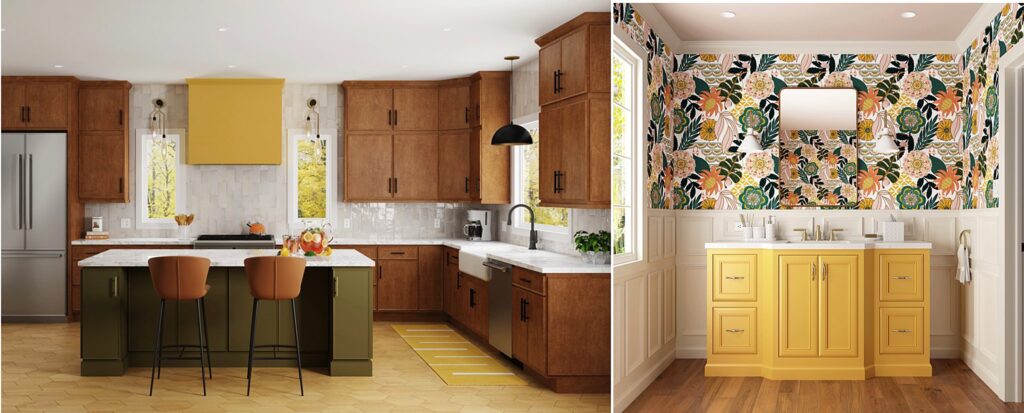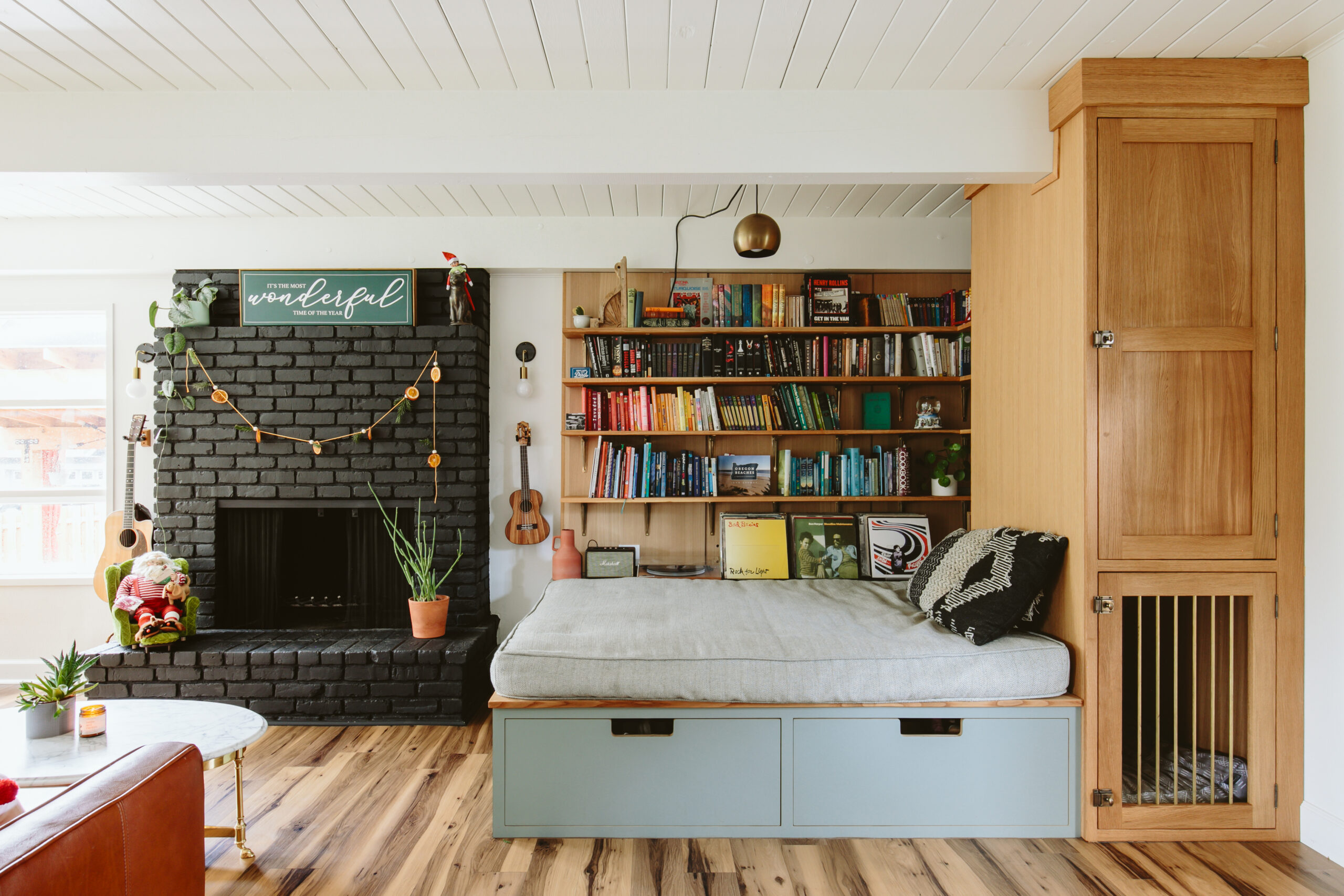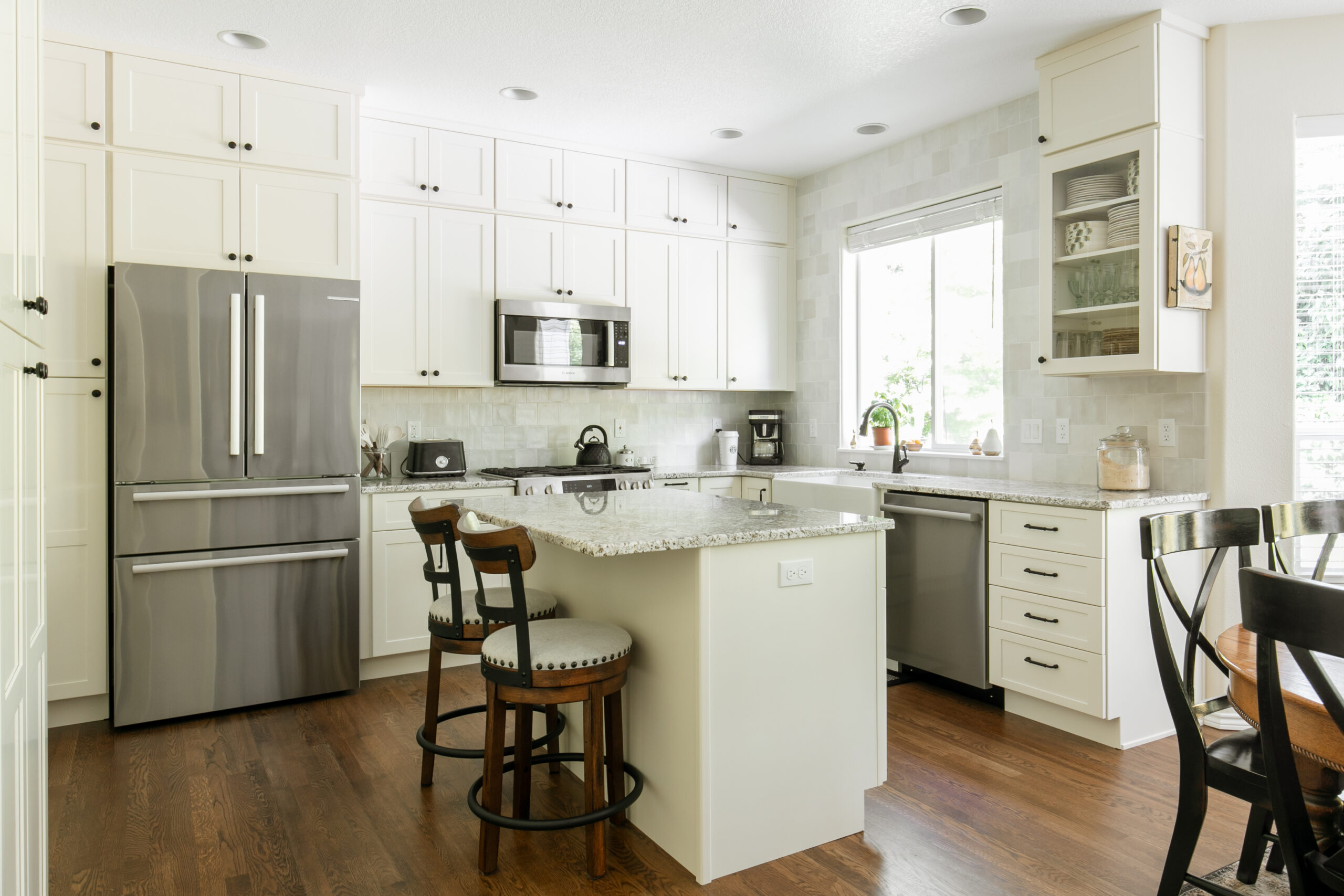Understanding Cabinetry Styles: Inset, Overlay, Framed, and Frameless
February 6, 2025
When it comes to designing your kitchen or bathroom, cabinetry plays a crucial role in both functionality and aesthetics. With various styles available, it’s essential to understand the differences between inset cabinetry, full overlay cabinetry, partial overlay cabinetry, framed cabinetry, and frameless cabinetry. Each style has its unique characteristics, advantages, and disadvantages, making them suitable for different preferences and needs. Let’s explore these cabinetry styles in detail.

Inset Cabinetry
Inset cabinetry features doors and drawers that fit flush with the cabinet frame. This style is known for its classic and timeless appeal, often found in traditional and transitional designs.
Pros:
– Elegant Appearance: Inset cabinets provide a clean, seamless look that enhances the overall aesthetic of a space.
– Durability: The precise fit of the doors often results in a sturdy construction, making them long-lasting.
– Customization: Inset cabinetry can be customized with beaded or non-beaded frames, allowing for additional design flexibility.
Cons:
– Cost: Due to the precision required in their construction, inset cabinets tend to be more expensive than other styles.
– Installation Complexity: The installation process can be more complicated, requiring skilled craftsmanship.

Full Overlay Cabinetry
Full overlay cabinetry features doors and drawers that cover the entire cabinet frame, leaving minimal space between them. This style is popular in modern and contemporary designs.
Pros:
– Maximized Storage Space: Full overlay cabinets provide more storage space since the doors cover the frame completely.
– Sleek Look: The seamless appearance creates a modern aesthetic that many homeowners desire.
– Affordability: Generally, full overlay cabinets are more affordable than inset options.
Cons:
– Limited Customization: While they offer a modern look, full overlay cabinets may have fewer customization options compared to inset cabinetry.

Partial Overlay Cabinetry
Partial overlay cabinetry has doors and drawers that cover only part of the cabinet frame, leaving more of the frame visible. This style is often seen in traditional designs.
Pros:
– Cost-Effective: Partial overlay cabinets are typically less expensive than both inset and full overlay options.
– Classic Look: They provide a traditional aesthetic that appeals to many homeowners.
– Easier to Install: The installation process is generally simpler compared to inset cabinetry.
Cons:
– Less Storage Space: The visible frame can reduce the overall storage space compared to full overlay options.
– Less Seamless Appearance: The gaps between the doors can create a less polished look.

Framed Cabinetry
Framed cabinetry features a face frame that provides structural support and a finished look. This style can accommodate both inset and overlay doors.
Pros:
– Sturdy Construction: The face frame adds durability and stability to the cabinets.
– Versatile Design: Framed cabinetry can be customized with either inset or overlay doors, offering flexibility in design.
– Easier to Repair: If a door or drawer is damaged, it can be easier to replace or repair due to the frame’s support.
Cons:
– Reduced Storage Space: The face frame can limit the interior space compared to frameless options.
– Less Modern Look: Some homeowners may prefer the sleek appearance of frameless cabinetry.

Frameless Cabinetry
Frameless cabinetry eliminates the face frame, allowing the doors to attach directly to the cabinet box. This style is often associated with modern and contemporary designs.
Pros:
– Maximized Storage Space: Without a face frame, frameless cabinets offer more interior space and easier access to items.
– Sleek and Modern Aesthetic: The minimalist design appeals to those looking for a contemporary look.
– Easier Installation: Frameless cabinets can be easier to install due to their straightforward construction.
Cons:
– Less Durability: Without a face frame, frameless cabinets may be less sturdy and require precise installation to ensure proper alignment.
– Limited Customization: They may offer fewer design options compared to framed cabinetry.

Choosing the right cabinetry style for your home depends on your personal preferences, budget, and the overall design you wish to achieve. Inset cabinetry offers a classic and elegant look, while full overlay cabinetry provides a modern and seamless appearance. Partial overlay cabinetry is a cost-effective option with a traditional feel, framed cabinetry offers durability and versatility, and frameless cabinetry maximizes storage space with a sleek design. By understanding the differences between these styles, you can make an informed decision that enhances the beauty and functionality of your space.
Leave a Reply
How long do you plan on staying in the home?
This question is crucial to deciding the quality and cost of goods for the project- more on this in a bit!
What type of Kitchen layout do you plan on using?
Sticking with the same layout is always the most economical option. However, if you want to change the layout- be aware of extra costs: electrical, plumbing, flooring, framing, drywall, paint, etc. Layout changes typically require a permit and possibly architectural drawings.
what is your budget?
Essential question! Even if you don't want to max out your budget, be prepared to discuss your allowance with the contractor. A reliable contractor will be able to work with your budget and your preferences to create the kitchen you really want. Realistic expectations and budgets are easier to work with up front- otherwise, cutting corners may end up costing you more in the long run, leaving you with an unfinished project.
send
01 considerations
02 choosing your builder
03 planning and design
are they qualified?
A qualified builder will guarantee a professionally finished product that will meet your budgeted expectations and time-frames.
BEWARE of hiring a builder without a contractor's license. Without it, you have little to no recourse if problems arise.
are they able?
The purpose of remodeling or building a home is to increase the value in the home itself as well as create a space for those who will live there to enjoy.
BEWARE of hiring someone who doesn't have the ability to make that happen or someone who doesn't care to make it happen.
send
01 considerations
02 choosing your builder
03 planning and design
Address resale issues.
If you're looking to resell or make a return on the remodel, design something with massive appeal- not something selective to just your taste.
To get ideas, think about scoping out remodels or houses for sale around your neighborhood- stay in competition with those upgrades to ensure maximum ROI.
Have you determined the scope?
How big of project can you afford; what is your time-frame for the construction period? This is when having a budget is helpful for a contractor. You may have certain desires for you space and the time-frame you wish to make it happen- but a limited budget. A qualified contractor will be able to take your ideas and the reality of building supplies, and create a crafty alternative that you'd love!
Have you thought outside the box?
Once the layout is agreed on... we get to the fun part! What kind of cabinets do you want? Builder grade cabinetry should be the lowest quality that you would put into any project. Upgrades vary and include all materials and quality of craftsmanship. You and your contractor will work together, and can discuss common upgrades.


Be the first to comment